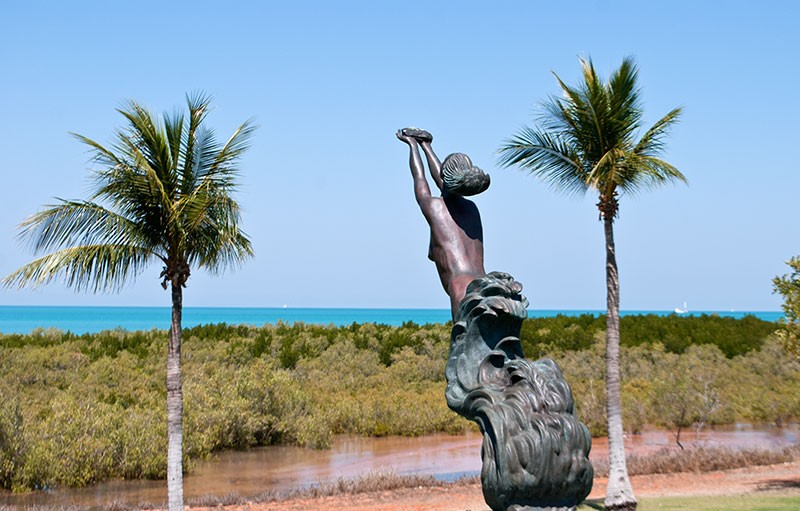A sculpture has been built in Broome to remember the contribution of women to pearl diving.

It took over a decade for sculptors Joan and Charlie Smith to finish the work. It pays homage to the women of pearling in Broome. It looks like a typical mermaid figure, but the woman is pregnant and she is gasping for air.
In the 19th century few white people would attempt pearl diving. The practice of “blackbirding”grew up – the forcible kidnapping of Aboriginal women as divers. They were forced to dive for pearl shells in deep water, often without breathing apparatus. Many drowned. Djugan and Yawuru woman Mary Barker, 72, said she had heard painful stories from her grandmother, “In the early days, there was no-one to do the job and they found the women had the lung capacity to stay underwater longer – they were the best,”. “Sometimes they used to go a little bit further and they would put the woman in respirators but tie stones to their legs to keep them down … they were knocked around, tied on the dinghies”. The often bore their master’s children. “It was very cruel – just talking about it makes me sad.”
The practice died out in the 1890s, when contracted male divers were brought in to the area, often from Asia. Aboriginal women were still seen on pearling luggers, but as domestic help or wives. This was the time of the White Australia policy and changes in government would see pressure to have the divers deported. Mixed families were often torn apart when Asian indentured workers were suddenly deported, leaving their women to raise children alone.
